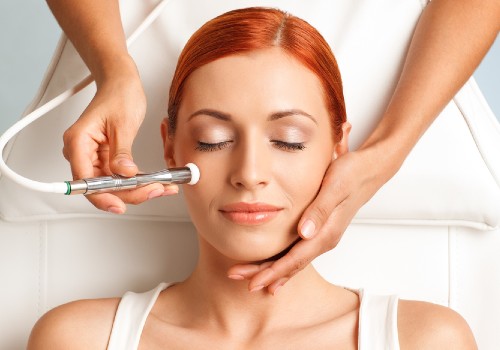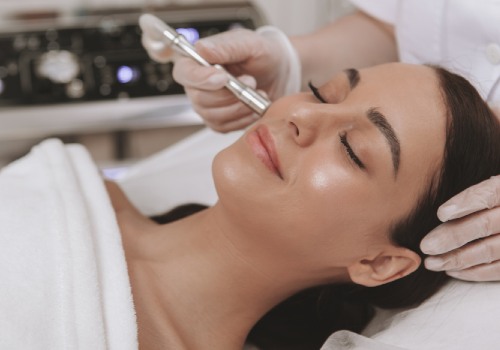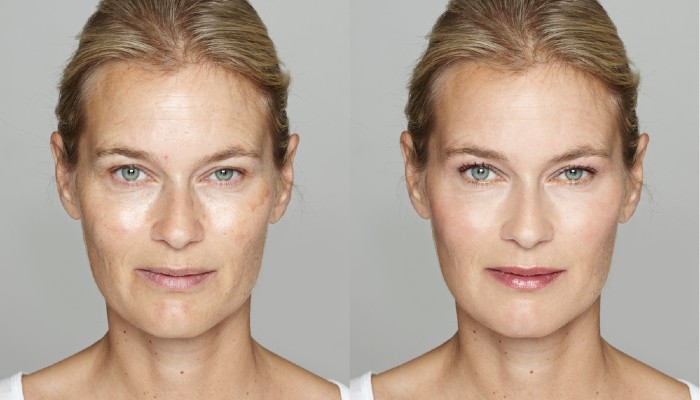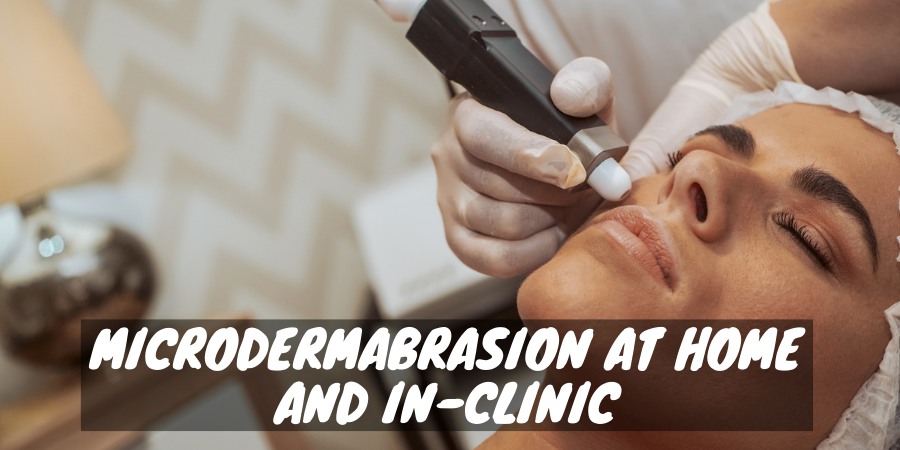There’s a dizzying array of skincare treatments out there, with one in particular popping up time and time again: microdermabrasion.
It’s a fancy word that makes big promises about its benefits for everything from wrinkles to blackheads to hyperpigmentation.
But what exactly is it, and how do you know if it’s right for you?
And, if so, do you need to shell out the big bucks for it at a clinic? Or can you save by doing it yourself at home?
Read on to learn everything you need to know about microdermabrasion, both at home and from a professional.
What Is Microdermabrasion?

Microdermabrasion can be thought of as exfoliation’s powerful big brother.
It involves the use of a special device to remove dead, dull and damaged skin, along with any imperfections on the skin’s surface.
How Does Microdermabrasion Work?
The microdermabrasion device is tipped with tiny, hard, abrasive materials that physically slough off dead skin. This gives the procedure its name — micro (small), derma (skin) and abrasion (removal by scraping).
Typically, the tip of the device is made from diamonds or similar hard crystals.
As the tip spins, a suction motor in the device pulls your skin towards the tip for better contact. The suction also helps to dislodge pore clogs and other debris from your skin.
Some microdermabrasion devices shoot tiny crystal particles at your skin in lieu of using a solid tip.
Depending on the intensity of the treatment, microdermabrasion removes either the outermost layer of your skin or several of the outer layers. Surface-level scars, blemishes and fine lines get buffed away in the process as well.
What you’re left with is a layer of smooth, even, undamaged new skin that looks younger and healthier than the old skin you just removed.
What Are the Benefits of Microdermabrasion?
Regardless of your skin type, condition and concerns, microdermabrasion can help you. Here are a few of the most common use cases.
Microdermabrasion for Acne
Whether you’re currently dealing with acne or want to fade scarring from past breakouts, microdermabrasion is a great option for you.
It can treat current blackheads and whiteheads by physically removing the clogs from your pores, along with any dead skin cells and hungry acne-causing bacteria on your skin.
And if your acne scars don’t penetrate too deeply, microdermabrasion could fade them or even remove them entirely. It works best on pitted scars but can also be effective on raised scars.
Microdermabrasion for Anti-Aging

Anti-aging is microdermabrasion’s strong suit.
It can buff away fine lines and shallow wrinkles before they get any worse, instantly giving you more youthful skin.
It’s also effective at smoothing out rough, flaky patches that are characteristic of aging skin.
And some evidence suggests that microdermabrasion can stimulate your collagen production. This leads to thicker, firmer, plumper skin over time.
Microdermabrasion for Sun Damage
Every time your bare skin comes in contact with UV rays, it takes a little damage from them,
Over time, this damage builds up, resulting in hyperpigmentation (dark patches) and age spots (also known as sunspots). That’s because UV light activates your melanin cells, causing them to cluster together and darken your skin.
But microdermabrasion removes these melanin cells along with the outer layers of your skin. This removes the dark patches and spots, along with any damaged cells in the area.
What Are My Microdermabrasion Treatment Options?

Microdermabrasion used to be a treatment you had to see a professional for.
But recently, new devices have popped up on the market that allow you to perform your own microdermabrasion at home.
Here’s a quick overview of these two options and some tips to help you decide which is right for you.
Professional Microdermabrasion
If you’ve never tried microdermabrasion before, we recommend seeing a professional to get acquainted with the procedure and safeguard against any side effects.
A dermatologist or esthetician has access to professional-grade tools and a wealth of skincare knowledge. They’ll be able to plan out the best treatment for you and carry it out without damaging your skin.
Since the procedure can be uncomfortable, it’s best to find out how well you tolerate it before taking it into your own hands. You’ll be able to leave the hard work to the experts while you become familiar with the process and sensations of microdermabrasion.
The biggest downsides are cost and time. Microdermabrasion can cost anywhere from $100 to upwards of $300 a session depending on your location, and you’ll likely need to set aside several hours of your day for the appointment.
Frequency of Professional Microdermabrasion
Despite the higher cost and time commitment, one of the biggest draws of professional microdermabrasion is the relatively low frequency of treatment.
A typical course of treatment requires 6 to 12 sessions spaced anywhere from 1 to 4 weeks apart. The exact interval will depend on your skin sensitivity and how well you handle the treatment.
Microdermabrasion at Home
Many products advertise themselves as being equivalent to professional microdermabrasion. But the truth is that no consumer product is as powerful as the professional devices that doctors have access to.
However, that doesn’t mean you can’t try microdermabrasion at home. You’ll just need to adjust your expectations — and ideally try a professional treatment first so you know what to expect.
Products like the PMD Personal Microdermabrasion Device are pricey at first glance, but often pay for themselves after just a few sessions.
They’re designed to be easy to use on your own skin and come with detailed instructions to guide you through the process.
The biggest drawback is the increased risk: you need a gentle, steady hand and a strong awareness of your skin to avoid damaging your skin.
Rawness and redness are common after at-home microdermabrasion. And if you use the device too long or too hard, you could actually cause scarring and hyperpigmentation rather than removing it.
Frequency of Microdermabrasion at Home
Because at-home microdermabrasion isn’t as powerful as professional treatments, you may need to undergo more sessions to see results.
At-home microdermabrasion can be performed once a week, and you may begin seeing results after 6 weeks. However, for all but the most minor issues, you’ll likely need to wait longer: anywhere from 12 to 24 weeks for full results.
Microdermabrasion Before and After

To see what microdermabrasion can do, look no further than these before and afters.
This Amazon user tried the aforementioned PMD microdermabrasion device and experienced noticeably smoother skin after one month of use. Her acne scars also began to fade, and her skin became more breathable.
Blogger Maureen Fitzgerald noticed a reduction in her crow’s feet and other fine lines after 6 weeks of at-home microdermabrasion. She also noted that her skin smoothed out enough to make her makeup application much easier.
And YouTuber K Dot Rae’s before and after shows that microdermabrasion helped to fade her acne scars. Using an at-home device also saved her tons of time and money, as she details in the video.

